Jason Johnson - Take the Main
Behind the Throttle: Edition 2, Installment 9
“We are giving people something to talk about”
I recall a particular conversation with one of my personal mentors in the historic railroad industry that inspired me to showcase the principle of operating machinery as a means of interpretation: “We don’t go to zoos to see taxidermied animals…” While a cosmetic restoration of an artifact is surely better than no restoration, his analogy made total sense to me: The best way to show the power and impact of steam locomotive is run the damn thing, and keep it running. Our spotlight today, having been involved with several mainline steam pursuits and events showcasing hot locomotives ready for their next call to service, shares this sentiment and has worked hard to show the potential and power of steam. Today, we meet Jason Johnson, Take the Main.
Jason’s first memory with trains takes him back to the Strasburg Rail Road of Lancaster, Pennsylvania. Having family living near the railroad made it an easy destination for gatherings, and Jason can distinctly remember watching Strasburg’s 2-10-0 locomotive No. 90 during the run-around moves at the end of their excursion line. “Every kid likes trains”, he recounted, but the likeness that Jason took would soon prove to stand the test of growing up. His frequent trips to Strasburg and the neighboring Railroad Museum of Pennsylvania would cement his interest, and he began looking for a way to dive further. In his hometown in eastern Ohio, excursion trains were running out of the Dennison Railroad Museum on tracks owned by the Ohio Central Railroad. Jason got involved at just 12 years old, car-hosting and taking in the experiences, and further falling in love with the romance of the railroad industry. He kept up with volunteering all through his primary education, and started working full-time with the Ohio Central on his 18th birthday. His first role at the railroad was in the track department, helping maintain the right-of-way, and he could usually be found working on the weekends during the railroad’s famed excursions, often in the cab of a steam locomotive keeping the engine hot. Alongside his job, Jason began studying at Kent State University, where he would earn degrees in both computer and mechanical engineering. This was accomplished alongside his full-time work on the railroad, a feat he pulled off by means of a lot of sleepless nights and a drive to learn as much as possible.
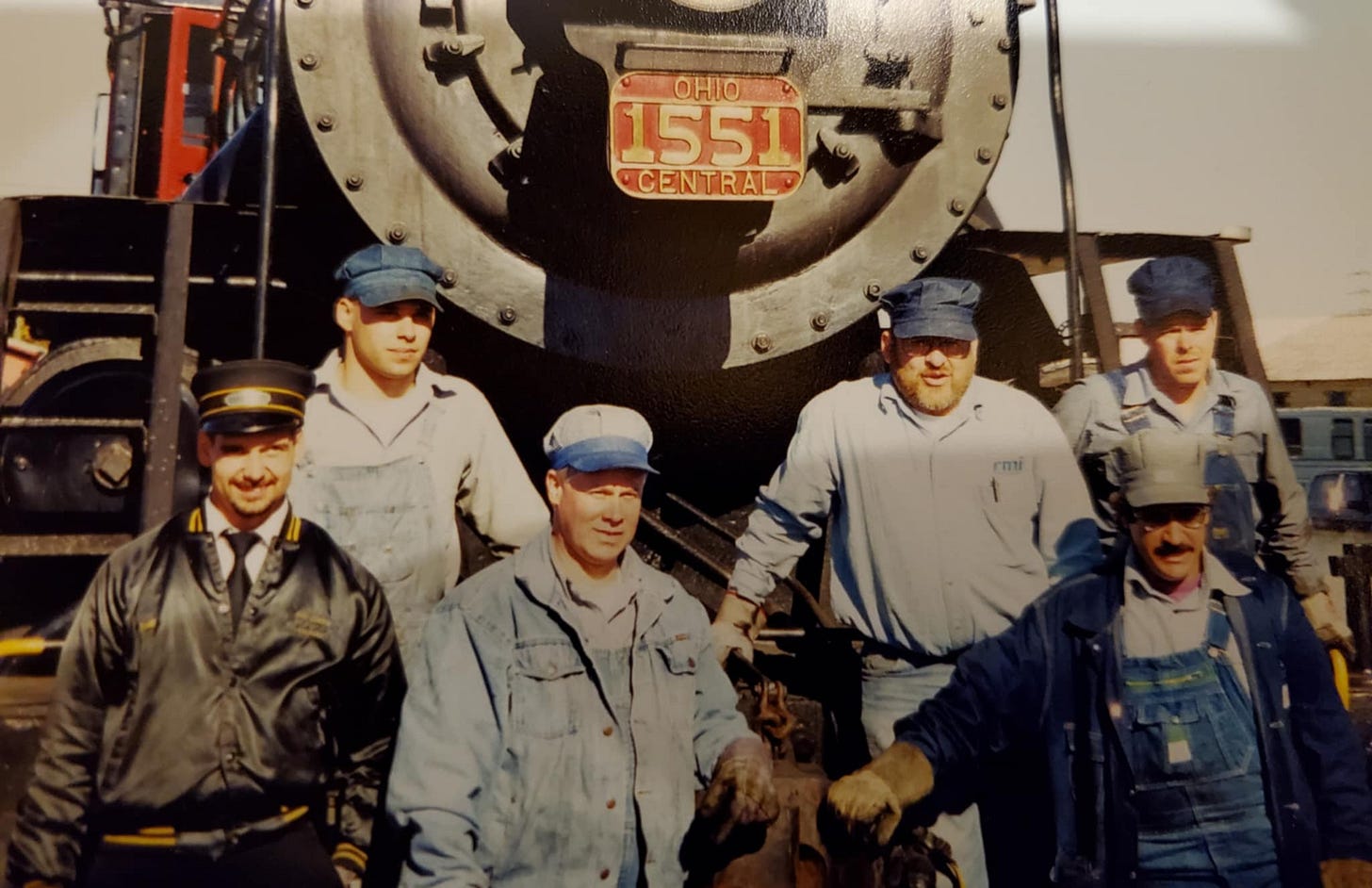
Jason graduated from Kent State, now armed with two degrees and just as much ambition (if not- more) than when his studies began. Hoping to take his degrees with him in his career, he began further immersing himself in the railroad. His drive had always been noticed by the folks in charge, and his dedication and skill landed him in the role of Chief Mechanical Officer, in charge of both marketing and rail operations for the passenger excursions that would bring a few hundred thousand people onboard historic trains and surely help kick off passions for railroads in a younger generation. Jason also worked to find more dedicated young blood- and employ them whenever possible (past Behind the Throttle spotlights Zach Hall and Kelly Lynch are two such examples). The surplus of steam locomotives and excursions that his railroad ran provided a great teaching tool for those looking to learn the art of railroading, and Jason wanted his workshop to be a classroom for those people who were willing to pick up the trade. Though he was only in his late 20’s and early 30’s at this time, Jason felt that passing the torch preemptively would secure the knowledge needed to keep steam running well beyond his own time. Lots of the people that Jason volunteered and worked with in his introduction to the industry were railroaders who saw the hind-end of the steam era, and he was quick to notice a trend that the men and women of the time were eager to share what they knew: There was this mission of passing the knowledge on”. Jason held their mission as his own after arriving at the CMO position, and continues to maintain the mindset in his current endeavors.
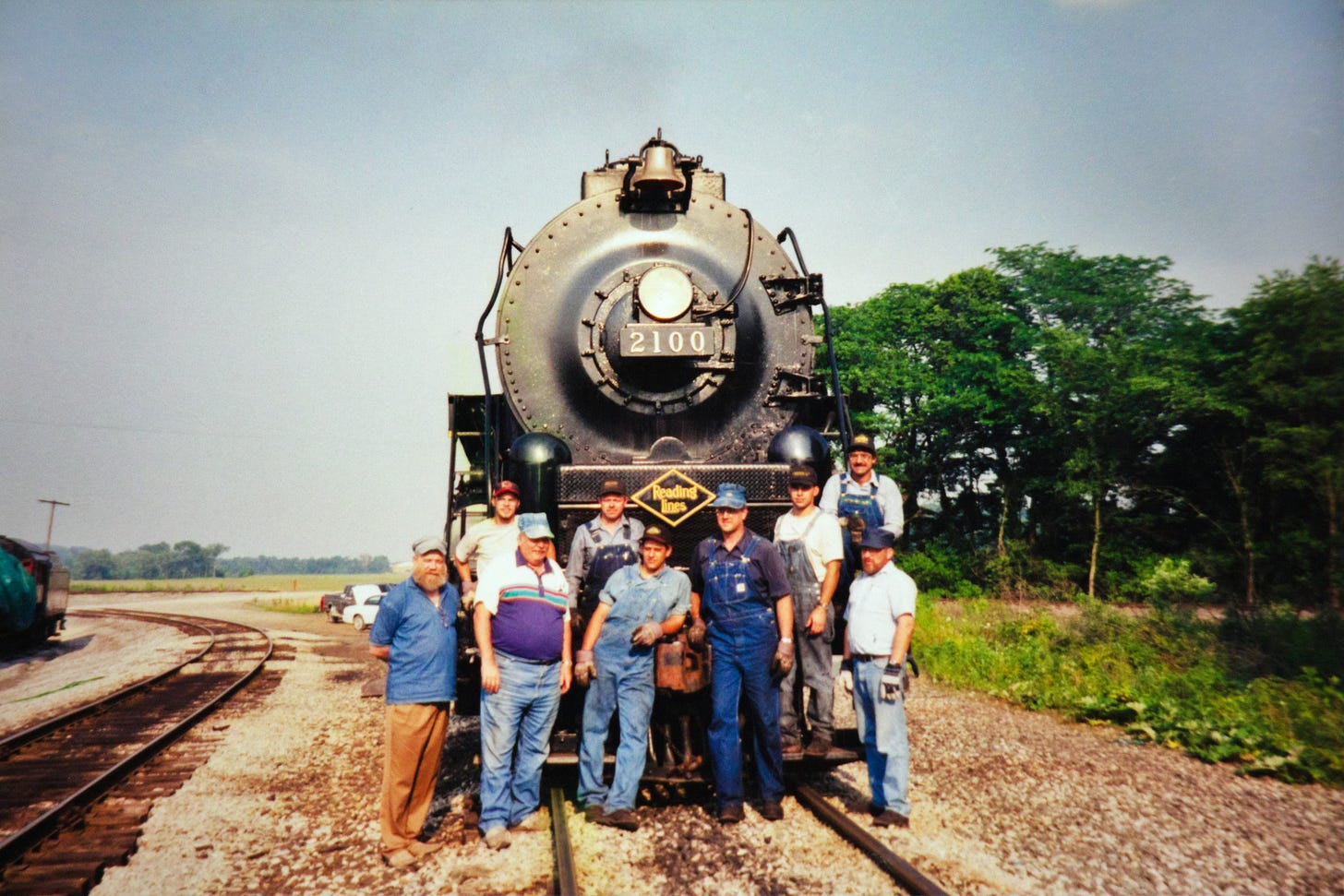
2004 saw Jason’s last hurrah at the Ohio Central, having accomplished lots of locomotive restorations and personal milestones, and training several people fit to take on his roles. The event “Trainfest” is a noteworthy title in the railroad world, and often is associated with events that bring heritage organizations, communities, and railfans alike in a spectacular fashion. Jason organized the 2004 Trainfest to the Ohio Central, using several of the locomotives from the site to pull excursions across the railroad’s network. Over 27,000 people attended the weekend of trains, and Jason was proud of the event, but also walked away with lots of lessons for planning the next one. In 2005, Jason stepped away from the Ohio Central, concluding a career of almost 11 years and knowledge to last a lifetime. His next move would take him outside of the railroad space as he used his degrees to start his own company, which he would sell a few years later. During this time Jason kept up with volunteer involvement in several railroad organizations, and maintained the connections and friendships he made through the world of steam. In 2009, Jason was called upon by the Steam Railroading Institute of Owosso, Michigan, to help plan the annual Trainfest celebration that they intended on hosting. Hoping to raise enough money to cover the 15-year overhaul of the SRI’s famed Berkshire steam locomotive, the Pere Marquette 1225, the hope was to compile as many steam locomotives into one location as possible. Many easy candidates from the surrounding midwest were brought out, including the Nickel Plate Road 765 from the Fort Wayne Railroad Historical Society, two locomotives from the Little River Railroad of Coldwater, Michigan, and a handful of little engines from owners and operators, but the biggest ticket item came from across the country. While at a conference for heritage railroads the year before the festival, Jason was bet that he couldn’t bring an icon of American steam to the 2009 festival. The Southern Pacific Daylight, a massive 4-8-4 type locomotive based in Oregon, would need to make a several thousand mile deadhead move, but Jason was determined and knew the event would do miles for the industry if he could achieve the feat. Plus, someone bet against him, and he felt determined to flip the odds around. After mapping out the deadhead move with a friend and then pitching the idea to Doyle McCormack, the locomotive’s manager, a plan was set in motion to bring nine steam locomotives to rural Michigan. The event brought over 30,000 attendees over a four-day span, and helped create a positive image of railroading in about every attendee and volunteer. Jason is quite proud to have organized such an event, knowing the impact that the funds raised have had on the groups that contributed their locomotives and their time. Jason went on to help coordinate a Trainfest in 2010 in West Virginia, and in 2011 in Rock Island, Illinois. Past 2011, the tides in mainline railroading shifted away from excursion events like Trainfest, but Jason hopes to see them return one day.
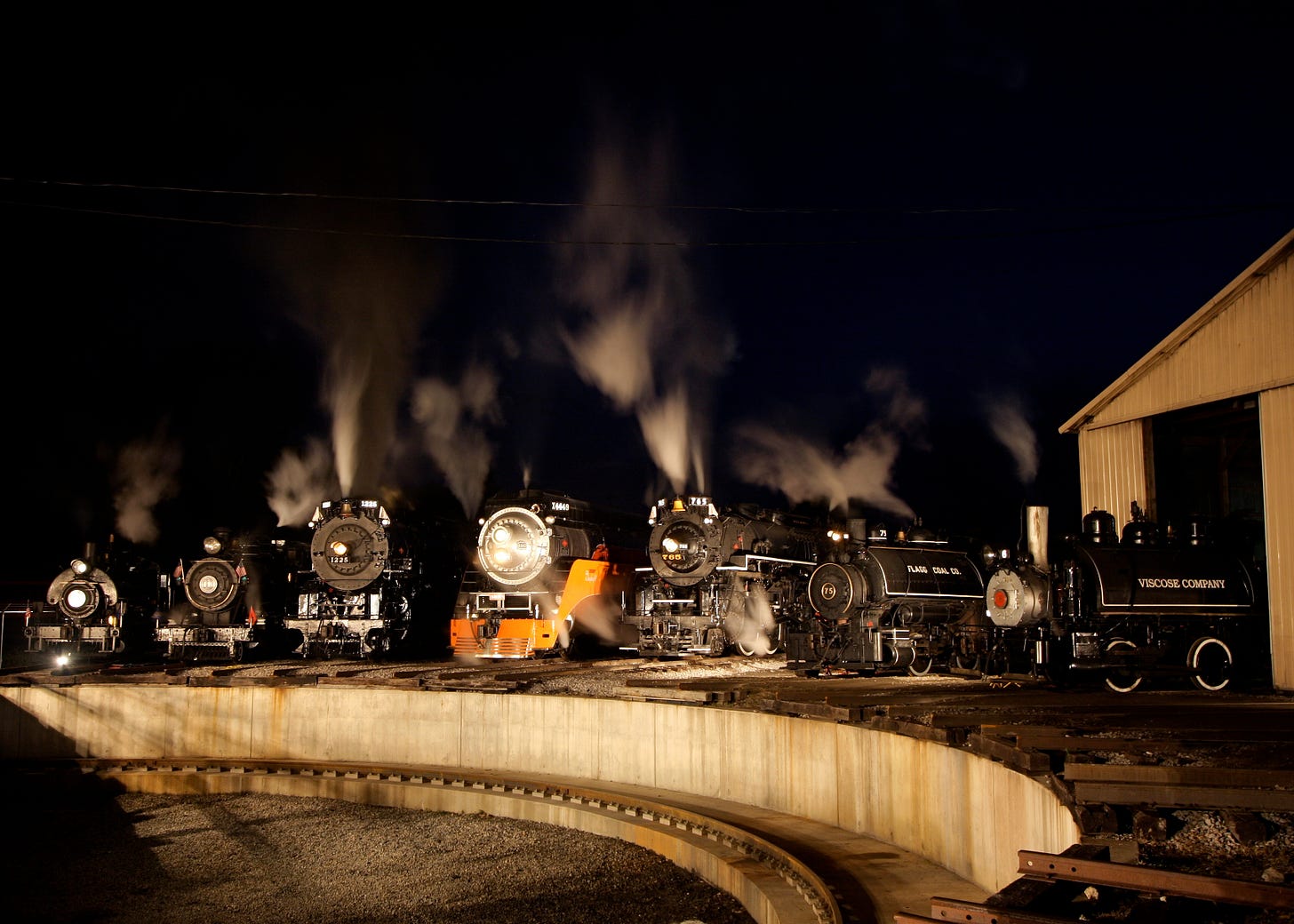
Now working for another project of his that specialized in building off-road emergency reposes vehicles, Jason found himself interested in getting involved with another preservation group that was doing something not yet done in the United States: Build a steam locomotive from scratch in the 21st Century. One of Jason’s mentors from his first days around the railroad was an engineer for the Pennsylvania Railroad and often talked fondly of the T1 locomotive, a unique 4-4-4-4 streamlined steam engine that was said to be the fastest steam locomotive ever built. Jason had joked for years that he wanted to build one of these rare birds from scratch, seeing that all of the historical examples had met the scrapper’s torch at the end of the steam era. Little did he know, a group of dedicated Pennsylvania Railroad enthusiasts was planning to do exactly that, and he was compelled to get involved as soon as he heard about their organization. He recalled that he was quite persistent on becoming a part of the organization, but the group was reluctant to bring him on at first. Though, after he secured a donation of the only surviving large Pennsylvania Railroad tender (a great stand-in for the newly-built T1 and saving the organization a few hundred-thousand dollars), he was brought on as the General Manager of the project. Over the last 10 years, Jason and the organization have completed several major milestones in railroad preservation, including fabricating a brand new boiler and frame larger than a fully-grown whale. Jason also assisted in creating a partnership between the T1 Trust and the Dennison Railroad Museum to obtain a grant for a new locomotive shop to be built in Dennison, where the T1 will be assembled. This achievement is a nod to the meager yet capable shop that once stood in Dennison during the reign of the Pennsylvania Railroad, but also serves as a full circle moment for Jason as he brings the town that began his railroad career into a new chapter of preservation history.
Nowadays, Jason works full time managing several large enterprise companies that all deal with complicated technology in high-stress fields: medical, engineering, etc. Jason’s day job is often times more challenging than some of the work he does in the historic railroad field, which helps make some of the seemingly huge undertakings he invests in not so monstrous. He, on the contrary, enjoys the puzzle of finding a way to make the logistics around restorations work, and stresses the idea of looking at the “long game” for those involved. This stuff doesn’t surely happen overnight! Jason works and communicates closely with his restoration teams, reminding everyone that the work they’re all doing is part of history and will go on to create stories and memories for lifetimes: “We are giving people something to talk about”. In many of Jason’s circles, he sees lots of younger folks and tries hard to foster a committed passion for the work with them. He identified what he looks for in someone to deem them a candidate for greatness within the industry, saying they must be “humble, hungry, and smart”. He went on to say “Everybody shares the dream of running, not everyone will put the long hours when nobody is looking”, noting that the goal of being a steam engineer in today’s time is often a mountain to climb behind the scenes. Dipping into several other large volunteer restoration efforts, like the Reading 2100 with the American Steam Railroad Preservation Association, Jason has had lots of chances to work with young folks who want to contribute to the greater preservation industry, something he feels is a privilege. Jason also has found himself working with the group that aims to bring another massive locomotive — the Chesapeake and Ohio No. 614 — back into steam. Jason worked with the locomotive once in 1998, pushing coal from the tender into the auger while doing track speeds of 80 miles per hour. Being involved in mainline steam in major cities was one of the main hooks for railroading back in Jason’s youth, and he hopes that his work with this group, along with many of his other preservation pursuits, will achieve the same for a new generation.
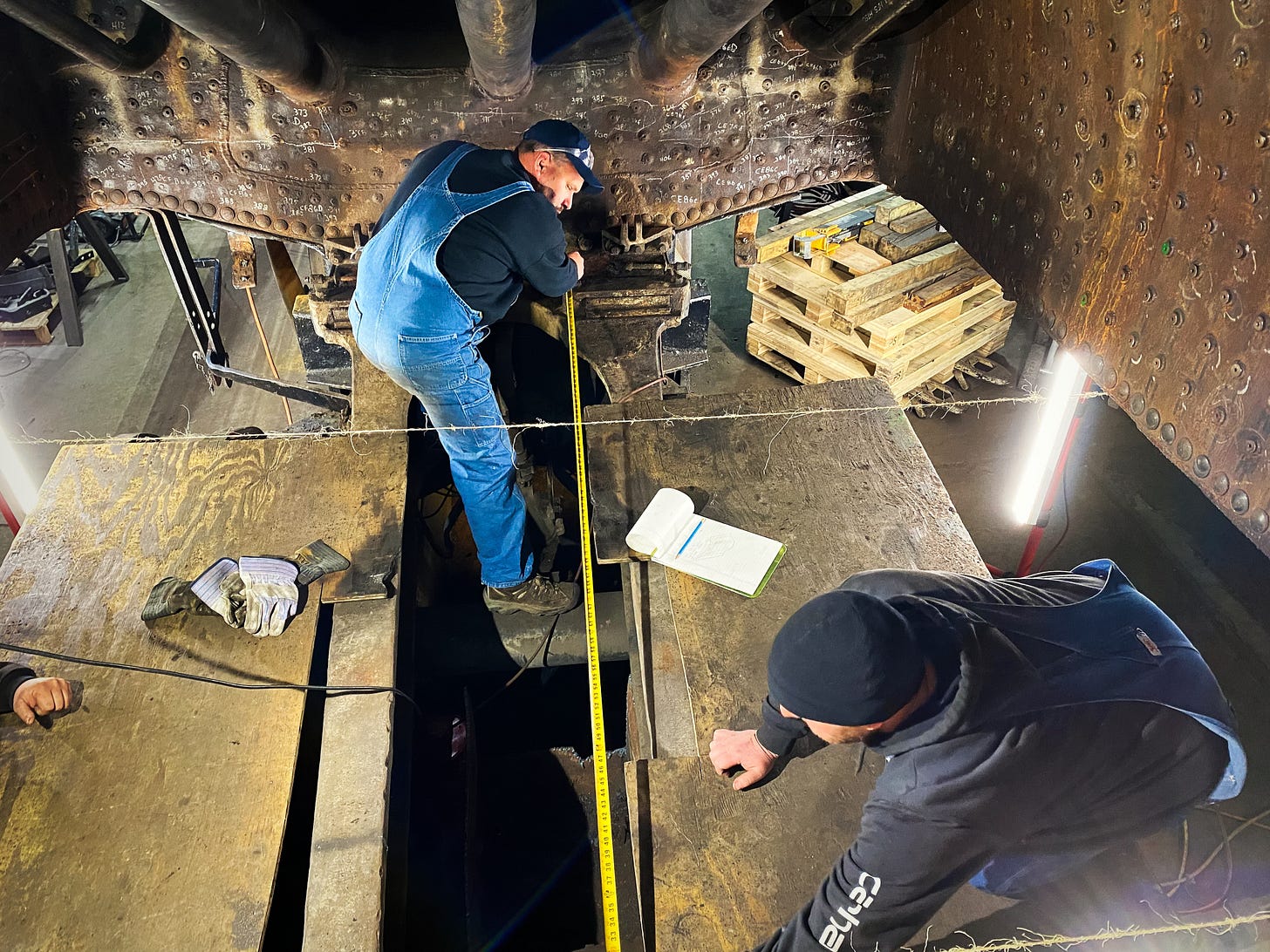
Thinking to the future of historic railroading — namely mainline steam, his chosen niche — Jason hopes to see a reassurance in the large-scale excursions and events that he grew up attending and working. He remains carefully optimistic that the current lull in such events will fade into a new age for steam to take the main, and foster an appreciation for the superpower that comes from compressed boiled water. With these excursions, Jason sees significance for three publics: the railroads that host them, the spectators and passengers, and the volunteers of the organizations that supply the locomotive. Thousands of memories and communities will be formed from coming out to see and ride these excursions, the positive publicity generated will give the major railroads a break from the news cycles that only pay mind to them when their trains go off the rails, but perhaps most importantly those people who sink long drives and countless hours on a shop floor - without pay - will see the fruits of their hardships and get to celebrate the machines they bleed and sweat to keep running. Jason sees this drive in many of the groups he works with, and is grateful for all the excitement and determination that seemingly transcends age, and is especially grateful that his son has taken up the same industry that has captivated him for so long. Michell Johnson has even fired for his dad on two locomotives and gotten involved with his own restoration efforts, something that bring great pride to Jason, and also reassurance that the historic railroad industry will outlive him. With several large locomotive projects happening across the country, Jason hopes that they all get a chance on the high iron, and hopes that their volunteers — young and old — remain inspired to learn and share the lore of this fascinating industry
Thank you for reading this edition of Behind the Throttle, and thank you to Jason for sharing his story with us. Tune in next time on August 4th as we spotlight one a young gun in charge of a major steam operation. Until then, I’m Max Harris and I’ll see you down the line.


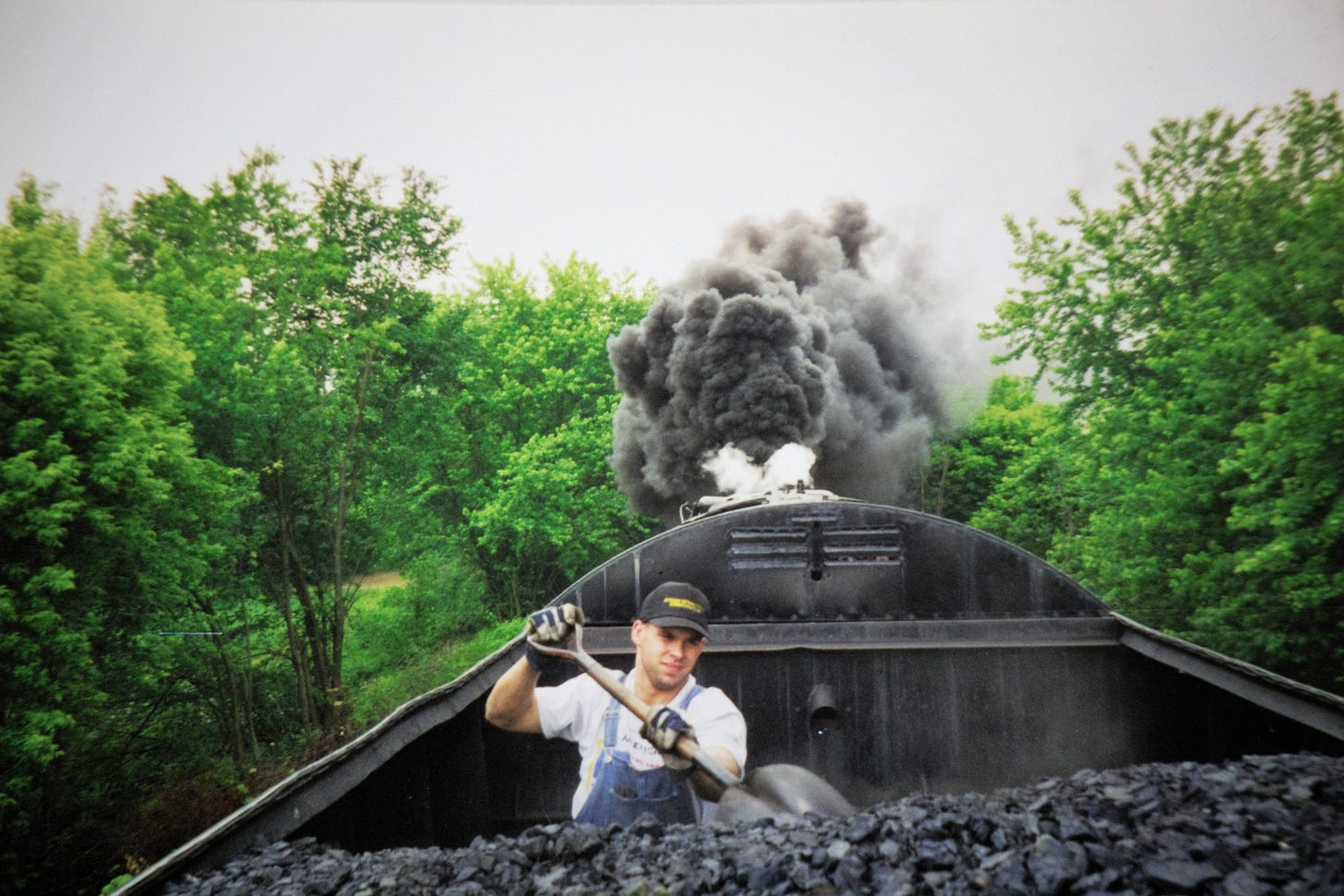
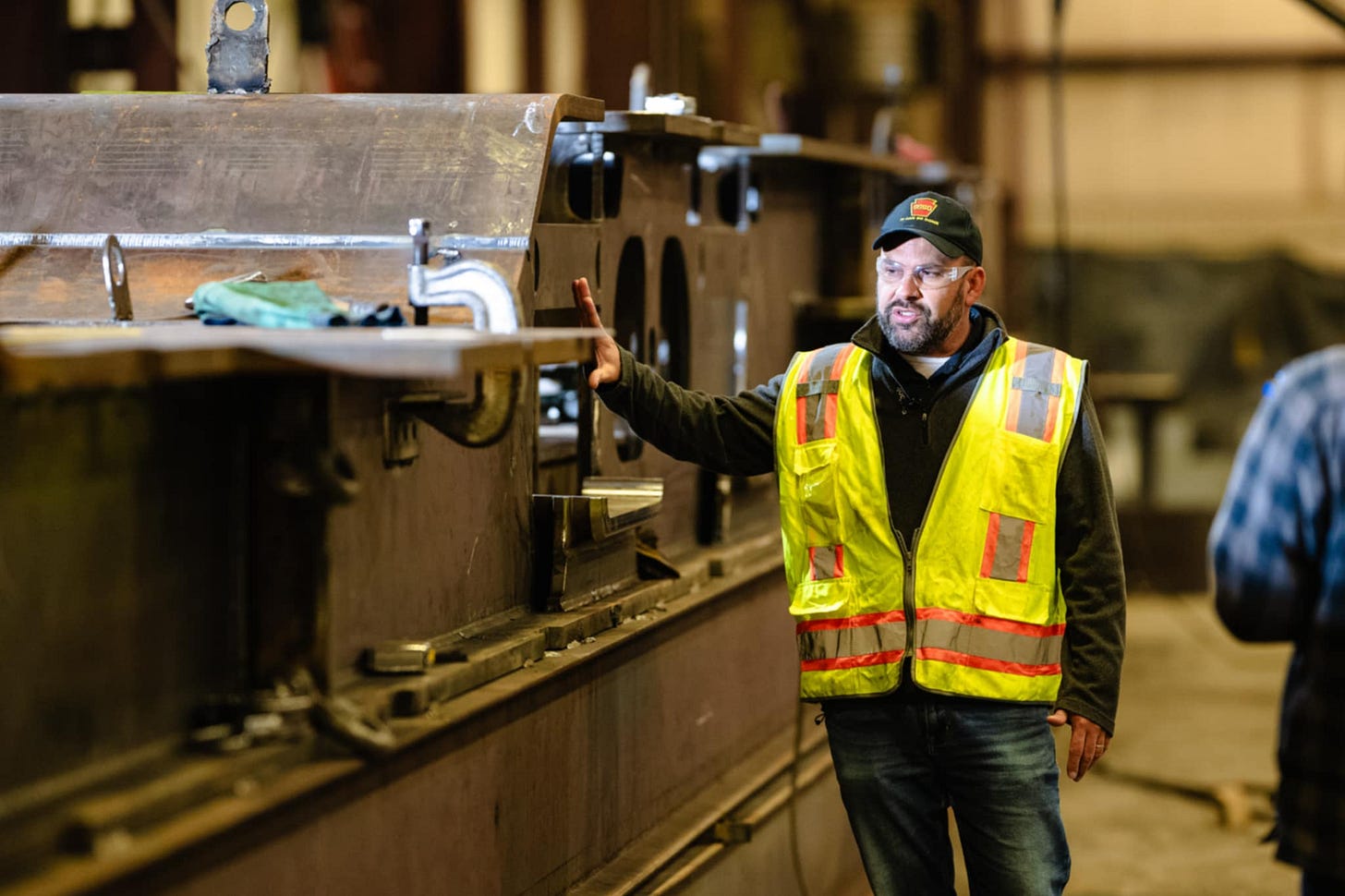
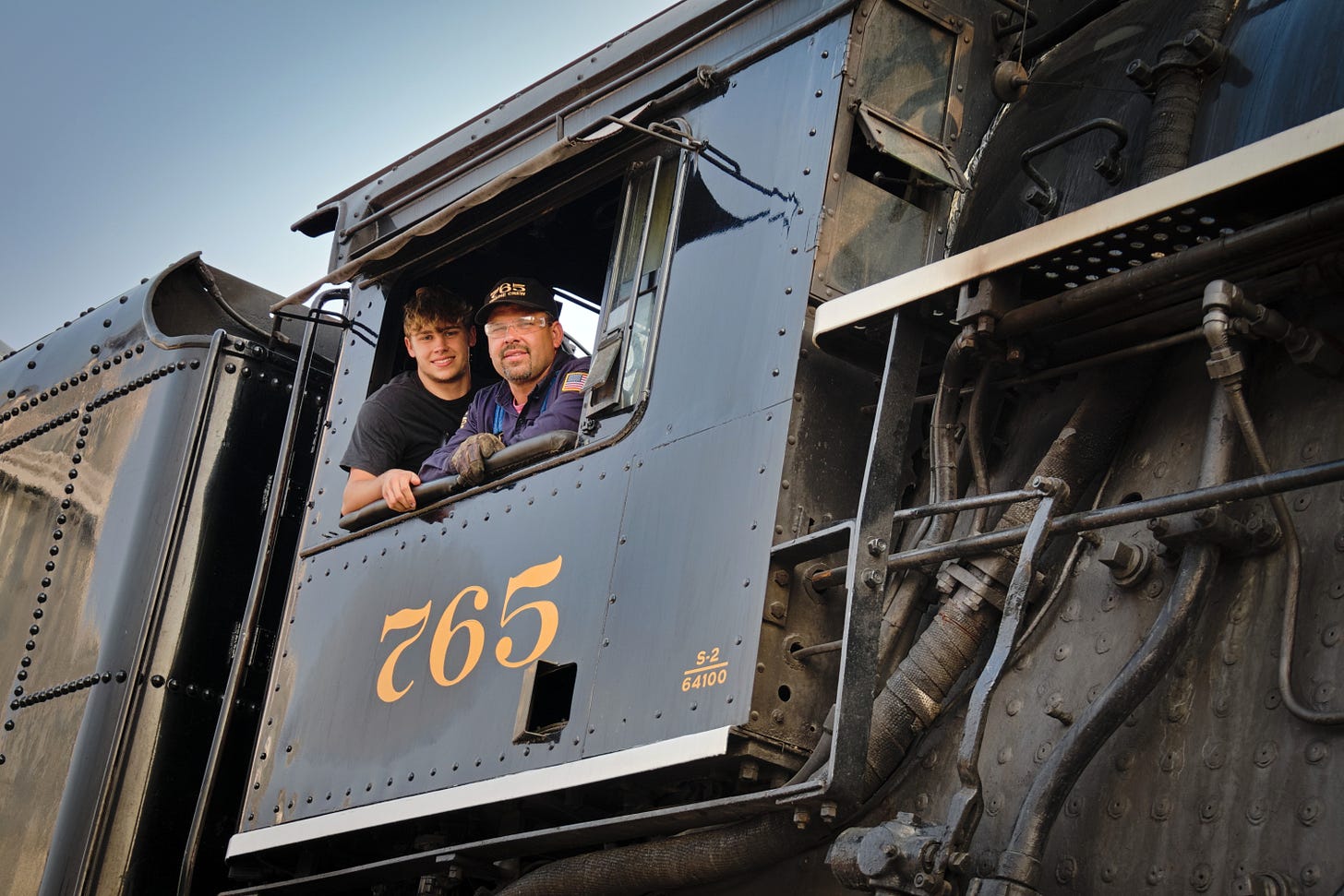
Interesting story and well written article Max!